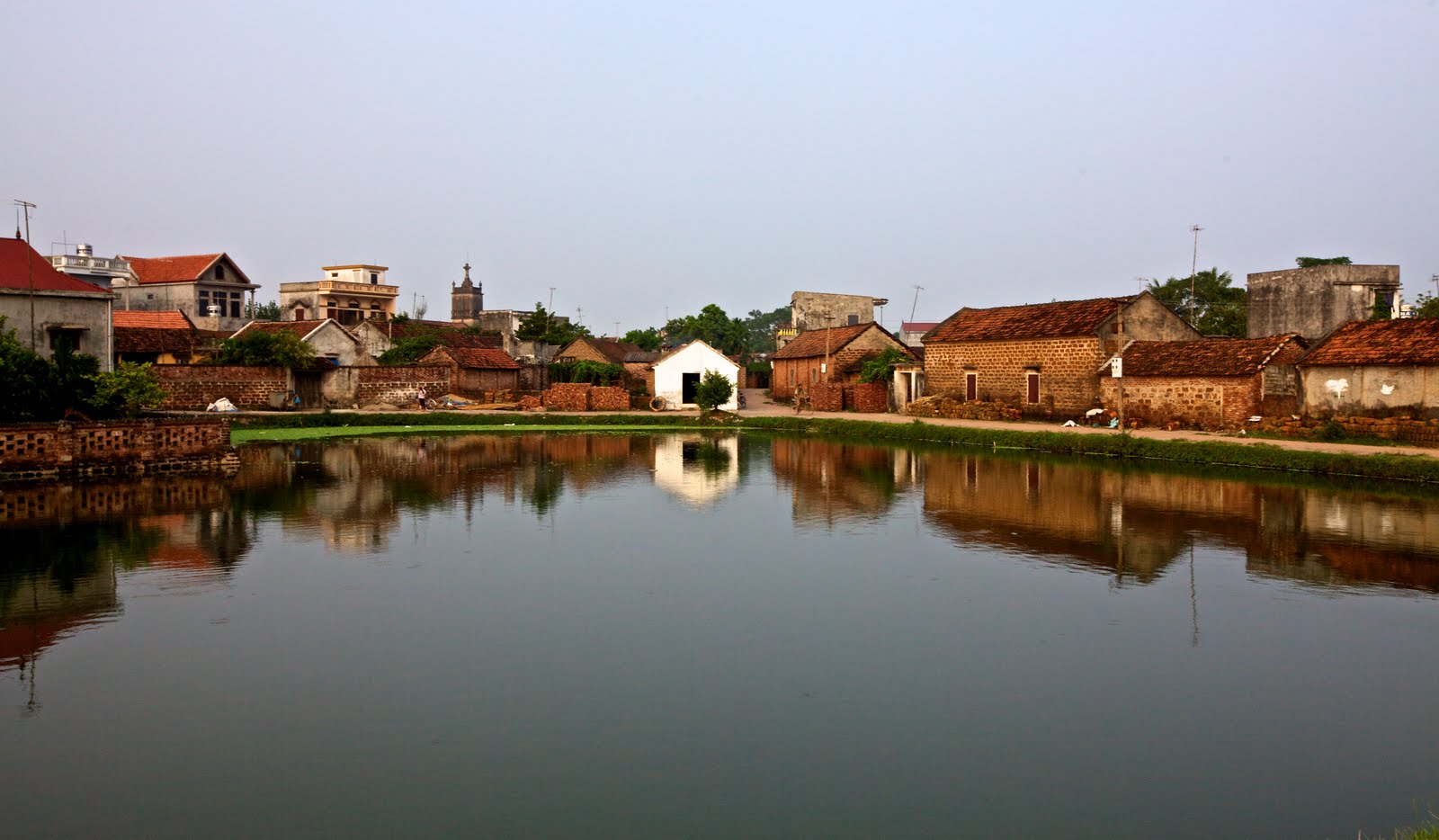Vietnam history
Vietnam’s identity has been shaped by long-running conflicts, both internally and with foreign forces. In 111 BC, China’s Han dynasty conquered northern Vietnam’s Red River Delta and the ancestors of today’s Vietnamese. Chinese dynasties ruled Vietnam for the next 1,000 years, inculcating it with Confucian ideas and political culture, but also leaving a tradition of resistance to foreign occupation. In 939 AD, Vietnam achieved independence under a native dynasty. After 1471, when Vietnam conquered the Champa Kingdom in what is now central Vietnam, the Vietnamese moved gradually southward, finally reaching the agriculturally rich Mekong Delta, where they encountered previously settled communities of Cham and Cambodians. As Vietnam’s Le dynasty declined, powerful northern and southern families, the Trinh and Nguyen, fought civil wars in the 17th and 18th centuries. A peasant revolt originating in the Tay Son region of central Vietnam defeated both the Nguyen and the Trinh and unified the country at the end of the 18th century, but was itself defeated by a surviving member of the Nguyen family, who founded the Nguyen dynasty as Emperor Gia Long in 1802.
French Rule and the Anti-Colonial Struggle
 In 1858, the French began their conquest of Vietnam starting in the south. They annexed all of Vietnam in 1885, governing the territories of Annan, Tonkin, and Cochin China, together with Cambodia and Laos, as French Indochina. The French ruled Cochin China directly as a French colony; Annan and Tonkin were established as French “protectorates.” Vietnam’s emperors remained in place in Hue, but their authority was strictly limited as French officials assumed nearly all government functions. In the early 20th century, Vietnamese intellectuals, many of them French educated, organized nationalist and communist-nationalist anti-colonial movements.
In 1858, the French began their conquest of Vietnam starting in the south. They annexed all of Vietnam in 1885, governing the territories of Annan, Tonkin, and Cochin China, together with Cambodia and Laos, as French Indochina. The French ruled Cochin China directly as a French colony; Annan and Tonkin were established as French “protectorates.” Vietnam’s emperors remained in place in Hue, but their authority was strictly limited as French officials assumed nearly all government functions. In the early 20th century, Vietnamese intellectuals, many of them French educated, organized nationalist and communist-nationalist anti-colonial movements.
Japan’s military occupation of Vietnam during World War II further stirred nationalist sentiment, as well as antipathy toward the French Vichy colonial regime, which took its direction from the Japanese until the Japanese took direct control in March 1945. Vietnamese communists under Ho Chi Minh organized a coalition of anti-colonial groups, the Viet Minh, though many anti-communists refused to join. The Viet Minh took advantage of political uncertainty in the weeks following Japan’s surrender to take control of Hanoi and much of northern Vietnam. Ho Chi Minh announced the independence of the Democratic Republic of Vietnam on September 2, 1945.
North and South Partition
 France’s determination to reassert colonial authority in Vietnam led to failed talks and, after armed hostilities broke out in Haiphong at the end of 1946, an 8-year guerrilla war between the communist-led Viet Minh on one side and the French and their anti-communist nationalist allies on the other. Following the French defeat at Dien Bien Phu in May 1954, France and other parties, including Britain, China, the Soviet Union, the United States, and representatives of the Viet Minh and Bao Dai governments convened in Geneva, Switzerland for peace talks. On July 29, 1954, an Agreement on the Cessation of Hostilities in Vietnam was signed between France and the Democratic Republic of Vietnam. The United States observed, but did not sign, the agreement. French colonial rule in Vietnam ended.
France’s determination to reassert colonial authority in Vietnam led to failed talks and, after armed hostilities broke out in Haiphong at the end of 1946, an 8-year guerrilla war between the communist-led Viet Minh on one side and the French and their anti-communist nationalist allies on the other. Following the French defeat at Dien Bien Phu in May 1954, France and other parties, including Britain, China, the Soviet Union, the United States, and representatives of the Viet Minh and Bao Dai governments convened in Geneva, Switzerland for peace talks. On July 29, 1954, an Agreement on the Cessation of Hostilities in Vietnam was signed between France and the Democratic Republic of Vietnam. The United States observed, but did not sign, the agreement. French colonial rule in Vietnam ended.
The 1954 Geneva agreement provided for a cease-fire between communist and anti-communist nationalist forces, the temporary division of Vietnam at approximately the 17th parallel, provisional northern (communist) and southern (noncommunist) zone governments, and the evacuation of anti-communist Vietnamese from northern to southern Vietnam, as well as the movement of a smaller number of former communist-led Viet Minh anti-colonial fighters to the north. The agreement also called for an election to be held by July 1956 to bring the two provisional zones under a unified government, a provision that the South Vietnamese Government refused to accept, arguing that conditions for free elections throughout Vietnam were not present. On October 26, 1955, South Vietnam declared itself the Republic of Vietnam.
After 1954, North Vietnamese communist leaders consolidated their power and instituted a harsh agrarian reform and socialization program. During this period, some 450,000 Vietnamese, including a large number of Vietnamese Catholics, fled from the north to the south, while a much smaller number, mostly consisting of former Viet Minh fighters, relocated north. In the late 1950s, North Vietnamese leaders reactivated the network of communist guerrillas that had remained behind in the south. These forces–commonly known as the Viet Cong–aided covertly by the north, started an armed campaign against officials and villagers who refused to support the communist reunification cause.
American Assistance to the South
 In December 1961, at the request of South Vietnamese President Ngo Dinh Diem, President Kennedy sent U.S. military advisers to South Vietnam to help the government there deal with the Viet Cong campaign. In the wake of escalating political turmoil in the south after a November 1963 generals’ coup against President Diem, which resulted in his death, the United States increased its military support for South Vietnam. In March 1965, President Johnson sent the first U.S. combat forces to Vietnam. The American military role peaked in 1969 with an in-country force of 534,000. Although the Viet Cong’s surprise Tet Offensive in January 1968 failed militarily, it damaged American and South Vietnamese morale and brought into question–domestically–U.S. reports of successes prior to the offensive. In January 1969, the United States, governments of South and North Vietnam, and the Viet Cong met for the first plenary session of peace talks in Paris, France. These talks, which began with much hope, moved slowly. They finally concluded with the signing of a peace agreement, the Paris Accords, on January 27, 1973. The Accords called for a ceasefire in place in which North Vietnamese forces were permitted to remain in areas they controlled. Following the Accords, the South Vietnamese Government and the political representatives of the communist forces in the South, the Provisional Revolutionary Government, vied for control over portions of South Vietnam. The United States withdrew its forces, although reduced levels of U.S. military assistance continued, administered by the Defense Attaché Office.
In December 1961, at the request of South Vietnamese President Ngo Dinh Diem, President Kennedy sent U.S. military advisers to South Vietnam to help the government there deal with the Viet Cong campaign. In the wake of escalating political turmoil in the south after a November 1963 generals’ coup against President Diem, which resulted in his death, the United States increased its military support for South Vietnam. In March 1965, President Johnson sent the first U.S. combat forces to Vietnam. The American military role peaked in 1969 with an in-country force of 534,000. Although the Viet Cong’s surprise Tet Offensive in January 1968 failed militarily, it damaged American and South Vietnamese morale and brought into question–domestically–U.S. reports of successes prior to the offensive. In January 1969, the United States, governments of South and North Vietnam, and the Viet Cong met for the first plenary session of peace talks in Paris, France. These talks, which began with much hope, moved slowly. They finally concluded with the signing of a peace agreement, the Paris Accords, on January 27, 1973. The Accords called for a ceasefire in place in which North Vietnamese forces were permitted to remain in areas they controlled. Following the Accords, the South Vietnamese Government and the political representatives of the communist forces in the South, the Provisional Revolutionary Government, vied for control over portions of South Vietnam. The United States withdrew its forces, although reduced levels of U.S. military assistance continued, administered by the Defense Attaché Office.
Reunification
 In early 1975, North Vietnamese regular military forces began a major offensive in the south, inflicting great damage to the south’s forces. The communists took Saigon on April 30, 1975, and announced their intention to reunify the country. The Democratic Republic of Vietnam (north) absorbed the former Republic of Vietnam (south) to form the Socialist Republic of Vietnam on July 2, 1976.
In early 1975, North Vietnamese regular military forces began a major offensive in the south, inflicting great damage to the south’s forces. The communists took Saigon on April 30, 1975, and announced their intention to reunify the country. The Democratic Republic of Vietnam (north) absorbed the former Republic of Vietnam (south) to form the Socialist Republic of Vietnam on July 2, 1976.
After reunification, the government confiscated privately owned land and forced citizens to adopt collectivized agricultural practices. Hundreds of thousands of former South Vietnamese government and military officials, as well as intellectuals previously opposed to the communist cause, were sent to study socialist doctrine in re-education camps, where they remained for periods ranging from months to over 10 years.
Expectations that reunification of the country and its socialist transformation would be condoned by the international community were quickly dashed as many countries expressed concern over Vietnam’s internal practices and foreign policy. Vietnam’s 1978 invasion of Cambodia in particular, together with its increasingly tight alliance with the Soviet Union, appeared to confirm suspicions that Vietnam wanted to establish a Soviet-backed hegemony in Indochina.
Vietnam’s invasion of Cambodia also heightened tensions that had been building between Vietnam and China. Beijing, which backed the Khmer Rouge regime in Cambodia, retaliated in early 1979 by initiating a brief, but bloody border war with Vietnam.
Vietnam’s tensions with its neighbors, internal repression, and a stagnant economy contributed to a massive exodus from Vietnam. Fearing persecution, many ethnic Chinese in particular fled Vietnam by boat to nearby countries. Later, hundreds of thousands of other Vietnamese nationals fled as well, seeking temporary refuge in camps throughout Southeast Asia.
The continuing grave condition of the economy and the alienation from the international community became focal points of party debate. In 1986, at the Sixth Party Congress, there was an important easing of communist agrarian and commercial policies.





